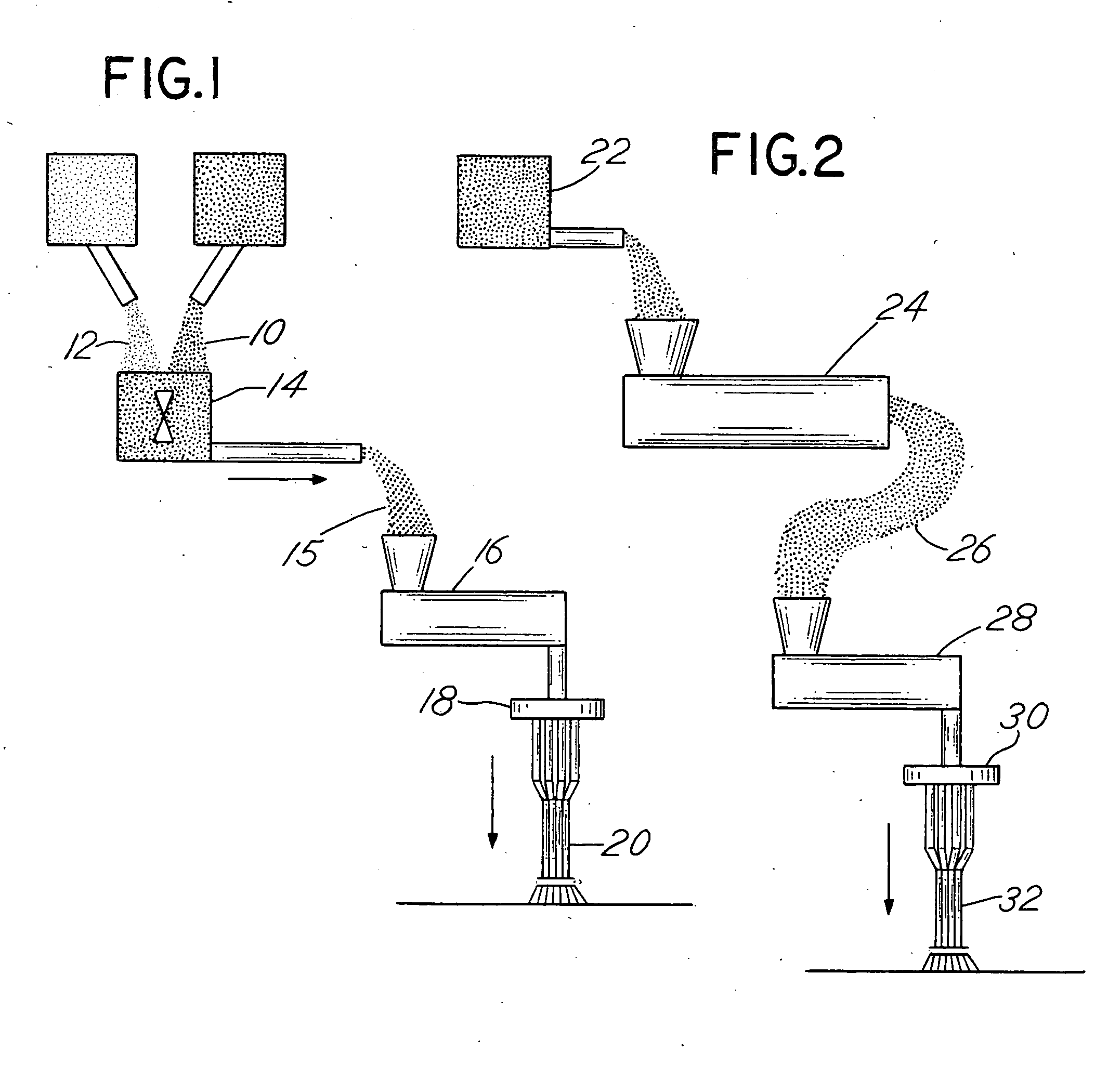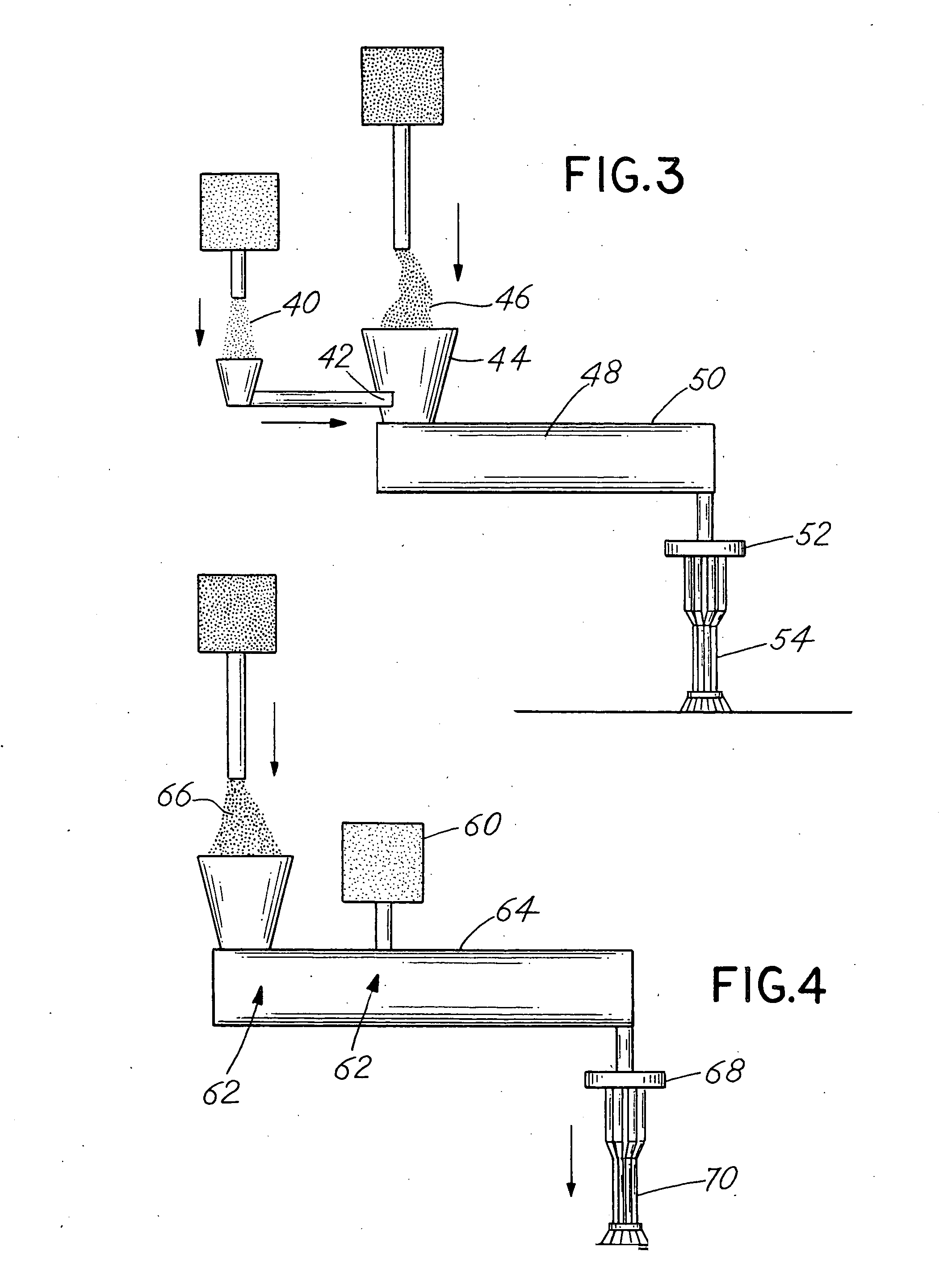Antimicrobial fabric and method for maunfacture of antimicrobial fabric
a technology of antimicrobial fabric and antimicrobial fabric, which is applied in the field of nonwoven fabrics, can solve the problems of lack of comfort, garments or personal use products made from or containing films, and film comfort also providing the minimum
- Summary
- Abstract
- Description
- Claims
- Application Information
AI Technical Summary
Benefits of technology
Problems solved by technology
Method used
Image
Examples
example 1
[0061] In the diagram for FIG. 1, which depicts a preferred embodiment, a polymeric material 10, typically in pellet form, is blended together in a blending mechanism 14 with the antimicrobial-containing additive 12, so that the polymeric material is coated with the antimicrobial-containing material. The antimicrobial-containing material can be in powder or liquid form. The blending process can be any number of processes, and is not generally considered as a limitation to the invention. Importantly, the polymeric material and the antimicrobial-containing additive are joined together so that there is a blend 15 that is then introduced to an extruder 16, which is connected to a die 18, from which fibers 20 will emerge. The fibers 20, typically in solid form, may then be processed as described hereinafter.
example 2
[0062] In the diagram of FIG. 2, the polymeric material 22, typically in pellet form, is blended together with the antimicrobial-containing additive, so that the polymeric material is coated with the antimicrobial-containing material. The antimicrobial-containing material can be in powder or liquid form. The blending process can be any number of processes known and is not generally a limitation to the invention. The polymeric material and the antimicrobial-containing additive are joined together so that there is a blend that is then introduced to a compounding process or machine 24. This process is utilized where enhanced uniformity of the dispersion of the antimicrobial-containing material is desired. This is also useful where large quantities are to be utilized, or large-scale manufacturing is desired whereby reduced variability between non-consecutive production runs is foreseen. The resulting chips or pellets 26 are then fed to an extruder 28, which is connected to a die 30, fro...
example 3
[0063] In the diagram of FIG. 3, the antimicrobial-containing additive 40, in powder, pellet, or liquid form, can be fed into the feed throat 42 of the hopper 44 of an extruder, in a controlled manner, so that it blends with the primary polymeric material 46 in particulate form, which enters the feed zone 48 of an extruder 50, where the two materials are then blended together. Once blended in the feed-portion of the extruder 50, the materials are then passed through the extruder 50, where they are combined into a molten-blend, as is the process in most extruders. The blend then passes into a die 52, from which fibers 54 will emerge.
PUM
| Property | Measurement | Unit |
|---|---|---|
| weight % | aaaaa | aaaaa |
| mean diameter | aaaaa | aaaaa |
| thickness | aaaaa | aaaaa |
Abstract
Description
Claims
Application Information
 Login to View More
Login to View More - R&D
- Intellectual Property
- Life Sciences
- Materials
- Tech Scout
- Unparalleled Data Quality
- Higher Quality Content
- 60% Fewer Hallucinations
Browse by: Latest US Patents, China's latest patents, Technical Efficacy Thesaurus, Application Domain, Technology Topic, Popular Technical Reports.
© 2025 PatSnap. All rights reserved.Legal|Privacy policy|Modern Slavery Act Transparency Statement|Sitemap|About US| Contact US: help@patsnap.com



